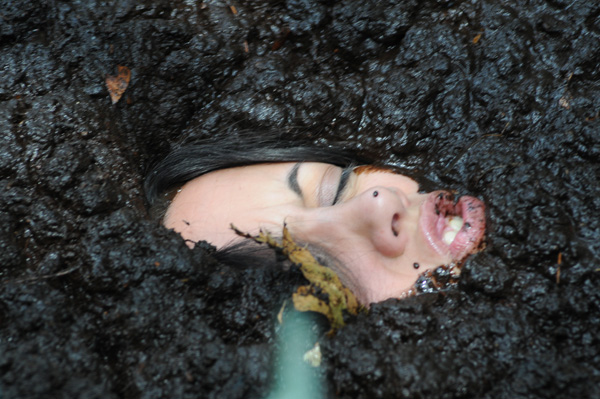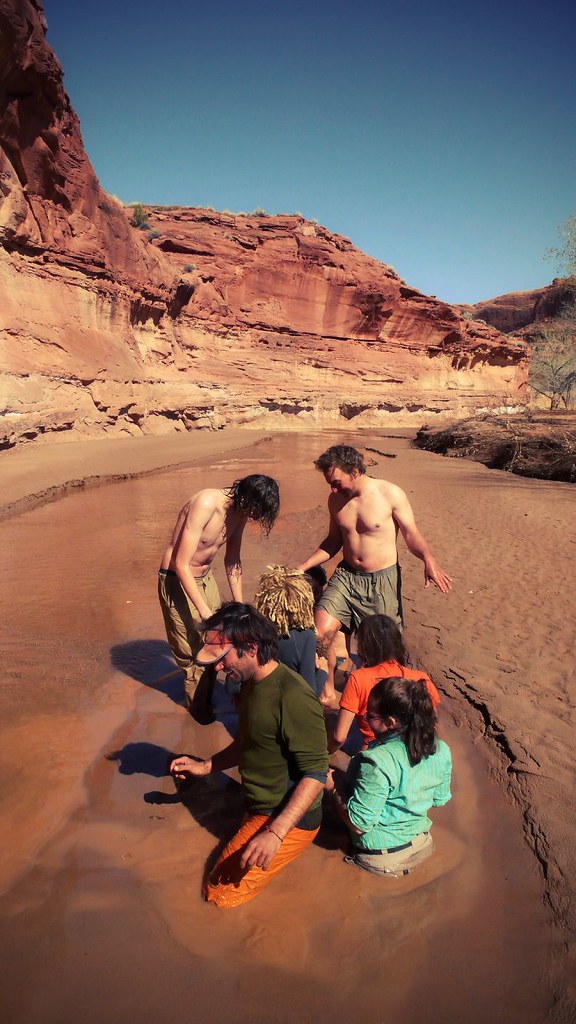

- #Drowning in quicksand how to
- #Drowning in quicksand movie
- #Drowning in quicksand free
#Drowning in quicksand movie
Panic: Despite movie scenes to the contrary, people are not dense enough to sink all the way under quicksand.Just as important as what to do is what not to do! Breathe Deeply: This will promote both buoyancy and calmness.This will help stabilize you while freeing your legs. Lay the pole on the surface of the quicksand, and lower your back onto it. Use a Trekking Pole: If you have a trekking pole with you, now is the time to use it (arguably it was before you got stuck, but hindsight is 20/20!).Patience will prevail, while big movements will further liquefy the quicksand and reverse your progress. Depending on how deep you have sunk, this process could take hours. With every inch you move a leg up, allow a moment for the quicksand to fill the space it once occupied.
#Drowning in quicksand free
Free Your Legs: Inch by inch, move your legs one at a time upward toward the surface of the quicksand. Only grab them after you have achieved a safe position (back float or seated with legs above surface). Use Your Resources: Assess your surroundings, and utilize any trees with reachable branches. After your feet break through the surface, slowly inch your way to “shore.” Much like sitting, this evenly distributes your weight, and allows your feet to float up to the surface. Float Your Way Out: If you sink and find yourself waist deep, lean back into a back float position. Head Above Water: Keep your arms and head above the surface at all times. Avoid large lunging steps, because a straddled position will make it harder to maneuver if one leg gets stuck. 
Backpedal: Before you sink too deep, take a few quick steps backward to where the ground was solid.The lighter you can make your body, the easier it will be to extract yourself. Eliminate excess weight: Throw your backpack to the side, and take off your shoes, if possible.If you can’t avoid it, you have to escape it. If the ground gives way under the walking stick, map another course. Test Before You Step: Tap the ground in front of you with trekking poles or a walking stick.Terrain with a rippled appearance is also a key indicator. Eye Your Terrain: If water is bubbling up from below the ground, you may have stumbled upon some quicksand.Be extra careful after a large rainstorm.
 Know Quicksand Danger Zones: Be on the lookout for quicksand around wet terrain near riverbanks, lakes, swamps, marshes, tidal flats, glaciers, or underground springs. Your best bet for surviving quicksand is to avoid it altogether. So quicksand is generally located near riverbanks, marshes, and beaches. Flowing water underground agitates the sand, which can create quicksand. Why? Because in order for quicksand to form, there needs to be water present. It is not until a person tries to step through it that this ground liquefies under his or her feet.Ĭontrary to what you may have seen in movies, quicksand is not actually often found in the desert. Unlike typical mud, quicksand can appear solid upon first glance. This quicksand then re-solidifies, trapping whatever may have sunk into its depths. The water turns the “sand” into a thick liquid mud that collapses under moving weight. Quicksand is a bit of a misnomer, because it isn't always, well, sand-it’s any mass of sand, clay, or dirt particles that contains trapped water. Try to reach for a branch or person’s hand to pull yourself out. Keep your arms up and out of the quicksand. Make yourself as light as possible-toss your bag, jacket, and shoes.
Know Quicksand Danger Zones: Be on the lookout for quicksand around wet terrain near riverbanks, lakes, swamps, marshes, tidal flats, glaciers, or underground springs. Your best bet for surviving quicksand is to avoid it altogether. So quicksand is generally located near riverbanks, marshes, and beaches. Flowing water underground agitates the sand, which can create quicksand. Why? Because in order for quicksand to form, there needs to be water present. It is not until a person tries to step through it that this ground liquefies under his or her feet.Ĭontrary to what you may have seen in movies, quicksand is not actually often found in the desert. Unlike typical mud, quicksand can appear solid upon first glance. This quicksand then re-solidifies, trapping whatever may have sunk into its depths. The water turns the “sand” into a thick liquid mud that collapses under moving weight. Quicksand is a bit of a misnomer, because it isn't always, well, sand-it’s any mass of sand, clay, or dirt particles that contains trapped water. Try to reach for a branch or person’s hand to pull yourself out. Keep your arms up and out of the quicksand. Make yourself as light as possible-toss your bag, jacket, and shoes. #Drowning in quicksand how to
Keep calm and trek on, adventure travelers, because we’ve got the 4-1-1 on what it is, how to avoid it, and what to do if you find yourself sinking in quicksand. It’s nature’s version of pulling the rug out from under you, after all, and it's a rare enough occurrence that can cause even the most seasoned hiker to panic. Though it's not quite as deadly as it appears in movies, quicksand can still throw an unsuspecting hiker for a loop.







 0 kommentar(er)
0 kommentar(er)
